Downtown Buenos Aires
Here you'll find the historic presidential palace, La Casa Rosada, so named for its vivid hue. The building houses the Executive Branch of government but is not the residence of the president. In the basement is a museum and a library collection of 17,000 volumes on the history of Argentina. Visitors on Argentina tours may visit some areas of the complex. Behind the palace is the La Plaza de Mayo where, from the balcony, huge crowds once gathered for the speeches of Juan and Eva Peron during their reign, an important historic site to visit when you travel to Argentina. Across the street from the plaza is the Metropolitan Cathedral, a 19th century church that holds the tomb of Argentina's liberator, General Jose de San Martin. Southern Explorations offers Argentina tours to this historic area on its Four Balconies Tour Extension.
The Microcenter contains two major pedestrian shopping promenades along the avenues of Florida and Lavalle, many first class hotels for visitors on Argentina tours, some tango history and many 19th century office buildings. The European-style Galerias Pacifico occupies one city-block along Florida. This elegant multi-use building contains two floors of shops, a third floor cultural center that features contemporary art shows and a tango school on the top floor.
The widest street in the world, the Avenida 9 de Julio, is here. Requiring three stoplights to cross, it commemorates the arrival of the Spanish and other important events in the city's history. The Plaza de la Republica with its 220-ft tall Obelisk fronts on the avenue. Here big crowds gather to share momentous occasions such as victory in a World Cup game. Not far away is the sumptuous 100-yr old Teatro Colon, South America's premier opera house. Performances here are a thrill for opera-lovers. Even for those who hate the art form, visiting this remarkable building on your Argentina tours can be fascinating.
The Retiro is home to several museums to visit when you travel to Argentina. Among them is the elegant Fernandez Blanco Museum of Latin American Art, housed in a 19th century Peruvian-style colonial mansion. It contains a collection of art, silver and furniture from colonial times. A visit to this museum is part of Southern Explorations' Fine Arts Tour Extension.
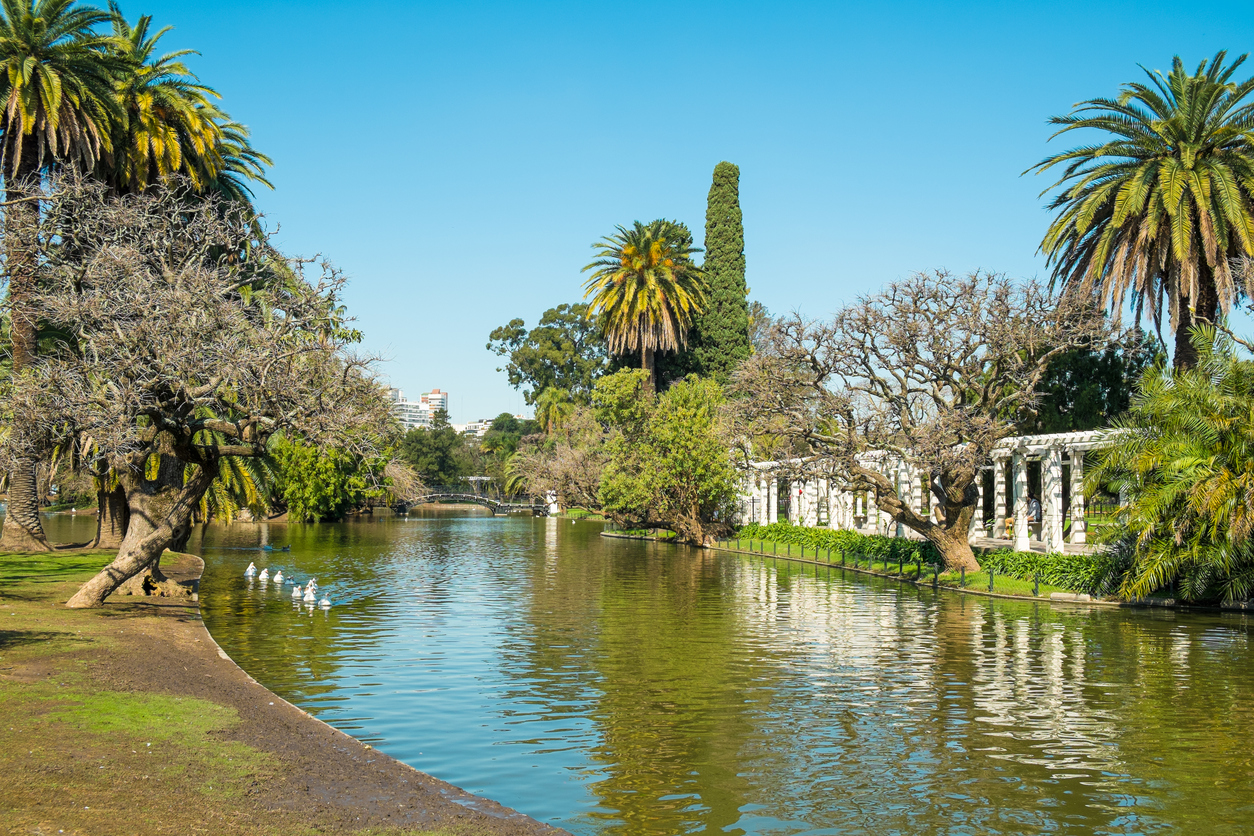
Palermo
For visitors on short Argentina tours, Soho will be the Palermo destination of choice. The area gained its name as a way to market its amenities. Like its Manhattan namesake, Palermo Soho is home to many artists and offers one-of-a-kind boutiques, some named for their designer-owners, and hip cafes galore. If you arrive by cab, ask to be dropped at Plaza Serrano, the nucleus of the neighborhood. This spot comes alive on the weekends, especially during the craft and clothing street fair; an event always enjoyed by souvenir-shoppers during their Argentina tours.
East of Palermo Soho and almost to the Recoleta neighborhood is the Museum of Latin American Art of Buenos Aires (MALBA), one of the city's newest museums. It contains a permanent collection of contemporary Latin American art. Learn more about visiting the MALBA when you travel to Argentina at www.malba.org.ar.
At the eastern edge of Palermo Soho is the Bosques de Palermo, a 198-acre wooded park. Here and in the vicinity, visitors on Argentina tours will find much to enjoy, including the Carlos Thays Botanical Garden displaying 7,000 species of plants, the Rosedal, a 1,200-species rose garden, the Edwardo Sivori Plastic Arts Museum, the city zoo and the Galileo Galilei Planetarium as well as lakes and bike paths where sports equipment may be rented. For those planning to keep up with their workouts when they travel to Argentina, Bosques de Palermo is the place to go.
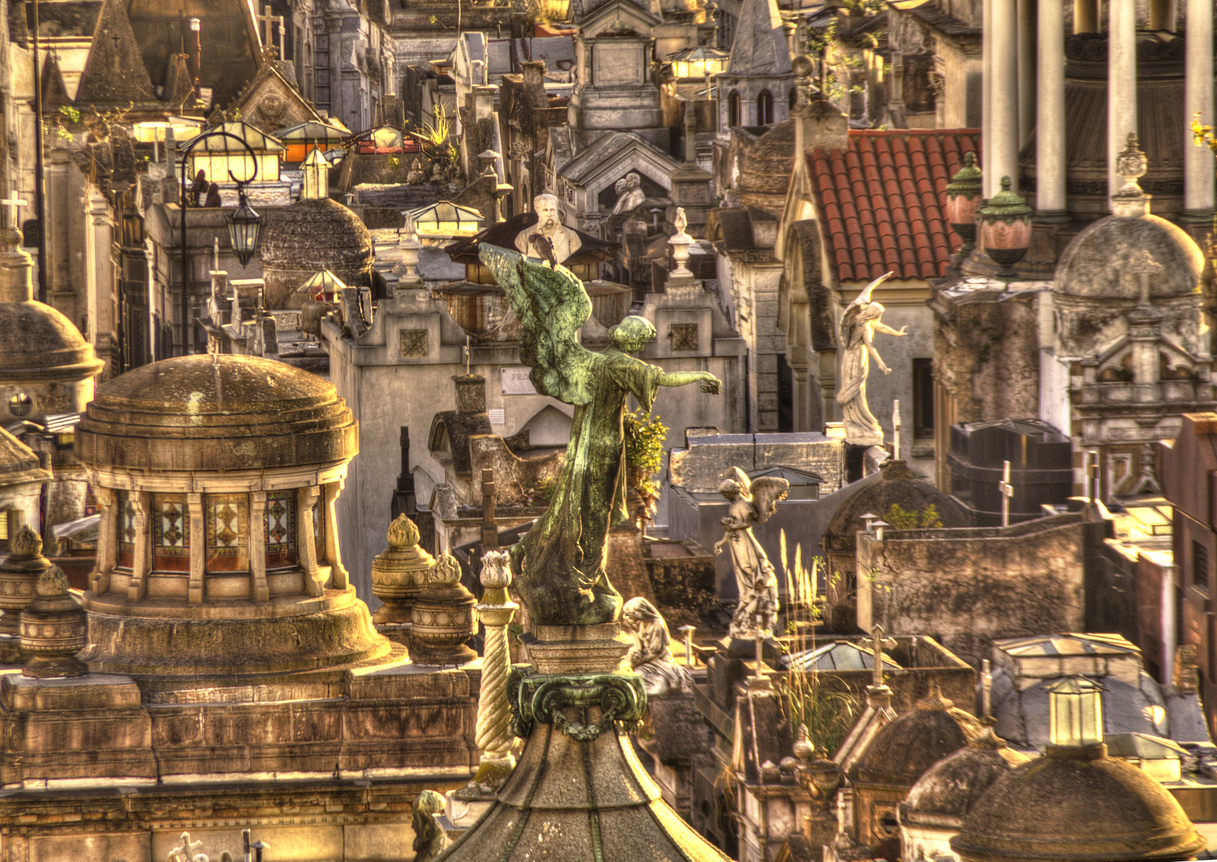
The Recoleta
Located between the Retiro and Palermo, the Recoleta has been home to the rich since a 1870s yellow-fever epidemic sent the wealthy class fleeing from their San Telmo homes to their summer digs here. It is the neighborhood of the literati where Argentina's most famous writer, Jorge Luis Borges, and his compatriots spent time. The Recoleta offers fine hotels and all the amenities a tourist could desire on travel to Argentina as well as a safe area for strolling.
The neighborhood's biggest attraction for visitors on Argentina tours is its cemetery. Aside from Eva Peron, the much-loved second wife of long-time president Juan Peron, the Recoleta Cemetery contains few names that would ring a bell with most gringos. Nonetheless, it ranks as one of the world’s great cemeteries, and is worth the trip when you travel to Argentina just to gaze at its eclectic architectural grandeur. For more details about this fascinating place, see our article on the subject.
Art lovers enjoy the neighborhood. The capital's most important museum, the National Museum of Belles Artes, is located in the Recoleta. It features 19th and 20th century Argentine painters as well as European masters and traveling shows. It is located in what was once the city's water pumphouse across the Avenida del Libertador from the Plaza Francia, where the city's biggest weekend street fair takes place. Learn more about visiting the National Museum of Belles Artes on Argentina tours at www.mmnba.org.ar.
For a Surrealist change of pace, there's the Museum of Xul Solar showcasing the works of Argentina painter, poet and all-round creative spirit, Alejandro Schulz Solari, who died in 1963. His friend, Borges, called Solari "an event," and the quirky interior of his former mansion-turned-museum attests to the accuracy of the description. Check for months and hours of operation if you wish to visit this museum when you travel to Argentina at www.xulsolar@ciudad.com.ar.
Since the Recoleta is where the wealthy live, you'll also find the dogs of the rich and famous here. Too busy to walk their own, the citizens turn this important responsibility over to professional dog walkers. The paseaperros, with five to ten handsome purebred dogs in tow, make their way through the throngs, creating one of the neighborhood's most flamboyant street spectacles, a memorable sight for those on Argentina tours. Buenos Aires does not appear to have the same maintenance problem of some other international dog-rich cities.
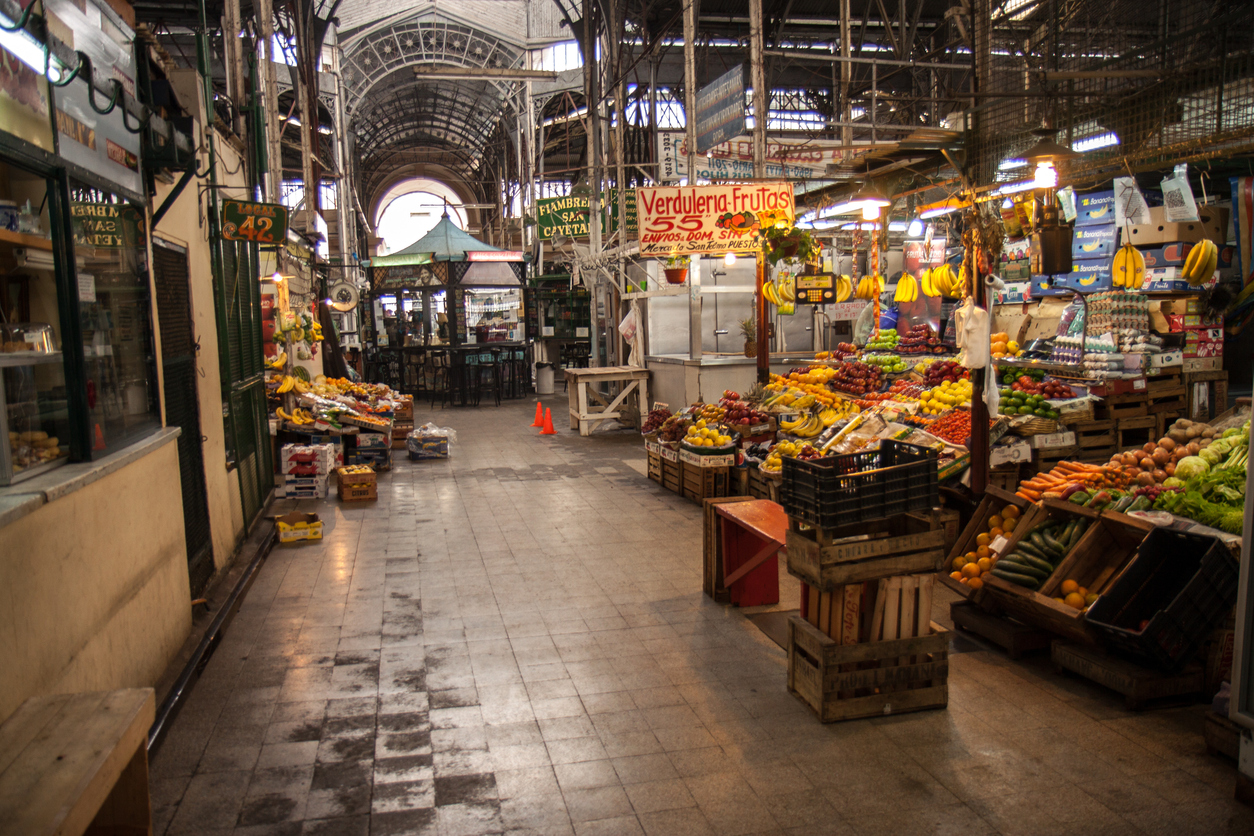
San Telmo
The neighborhood's Parque Lezama holds an important place in Buenos Aires history. It is believed the Spanish first founded the city here, a subject you may learn more about if you visit the park's National History Museum on your travel to Argentina. Through artifacts and paintings of historical subjects, the museum depicts mostly the colonial history of Argentina and the country's fight for independence from Spain. Nearby on the Plazoleta Olazabal stands the massive brass masterpiece, "Canto al Trabajo," by the late Argentine sculptor Rogelio Yrurtia. His homage to work is symbolized by several human forms pulling a large stone. Across from Parque Lezama is a Russian Orthodox Church built of materials shipped here from St. Petersburg, a unique sight on Argentina tours.
Much of the neighborhood's art is contemporary. In Buenos Aires, there is modern art and really modern art. When you travel to Argentina, don't confuse San Telmo's Bs As Modern Art Museum with The Museum of Latin American Art of Buenos Aires (MALBA), located in the Palermo neighborhood which also houses modern art. The edgiest of Buenos Aires' art scene may be viewed in Bs As Modern Art Museum, a converted tobacco warehouse between Plaza Dorrego and Parque Lezama. Visitors on Argentina tours who wish to see still more modern art while touring the neighborhood will find the Contemporary Art Museum on Defensa Street.
Sunday is a great day to visit San Telmo on your travel to Argentina. A huge antiques street market fills Plaza Dorrego on Sundays and sometimes Saturday too. Bus or subway will get you to within walking distance of the plaza, where you leave the fast lane, round a corner, and step back in history. You'll have plenty of choices in finding just the right souvenir of your Argentina tours in San Telmo. Mate cups (and bombillas, the metal straws used to sip the tea) come in inexpensive versions for under $10 to ornate antique varieties for upwards of $200. They're all here. You'll be able to hunt through seltzer bottles, antique jewelry and watches, collectibles, gaucho paraphernalia, sterling silver tea sets and art. Perhaps you'll find a set of baby pink china or a sexy vintage tango dress, unique mementos of your Argentina tours. At the nearby indoor Mercado San Telmo, you'll discover more of the same along with fruits and vegetables. Surrounding the square and on adjacent streets are cafes interspersed with a multitude of antique shops. All the while you'll be entertained by street performers and tango dancers. A few blocks away you’ll find a smaller Sunday crafts market in Parque Lezama.
If you'd like to visit this neighborhood on your travel to Argentina, you have options, as four of Southern Explorations' Buenos Aires day-tour extensions visit San Telmo. The historical Four Balconies Tour Extension comes to the neighborhood. The three-hour Fine Arts Tour visits the internationally famous Palarols silver workshop and school operated by seventh generation silversmith, Juan Carlos Palarols. The Tango Show Extension and The Real World of Tango Tour Extension take place in San Telmo's intimate Bar Sur, one of the city’s oldest most intimate tango salons.
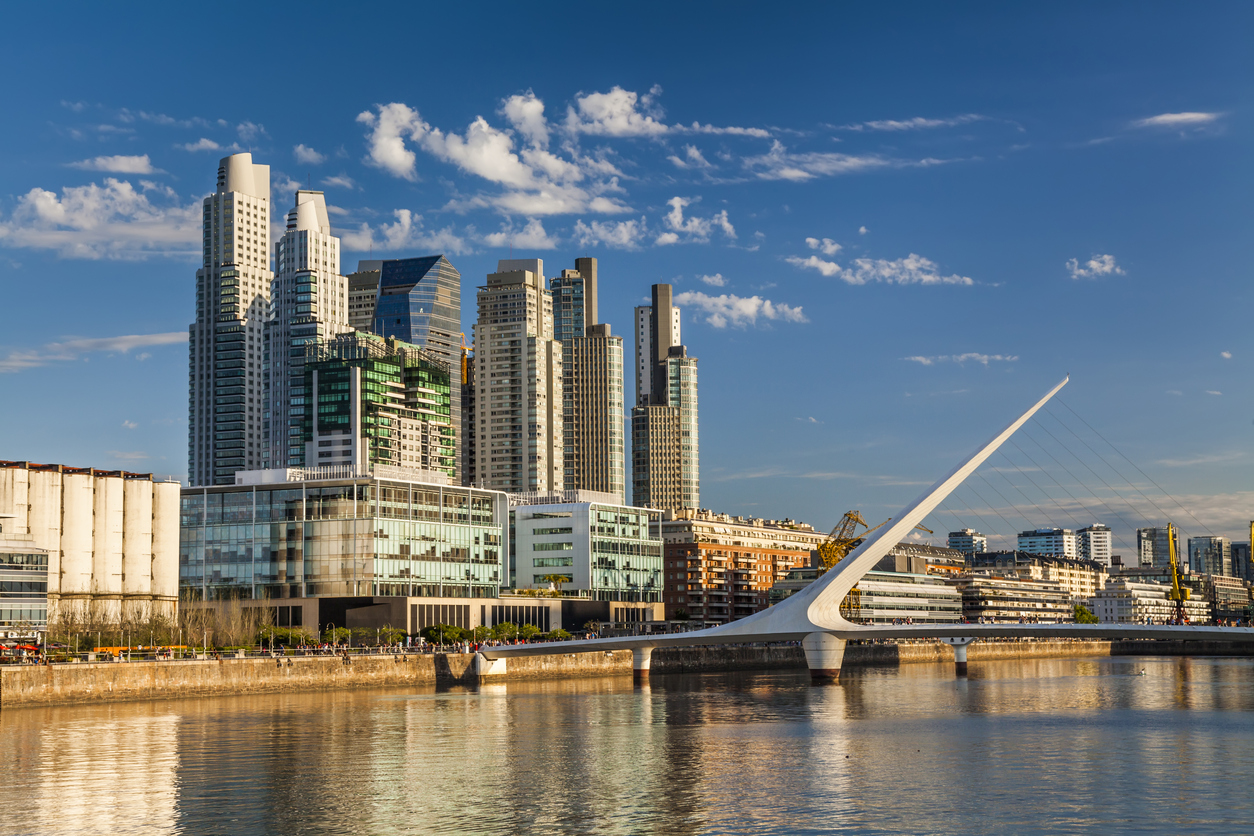
Puerto Madero
Across the dikes is an 864-acre ecological reserve (Reserva Ecologica Costanera Sur) where the ill-fated military junta of the seventies once envisioned building a new portside city but only got as far as stockpiling the river sediment on which to build. What humans couldn't accomplish was handed over to marsh-loving wildlife, including 200 species of birds. In 1986, the area was declared a reserve that has become a popular weekend destination for birdwatchers, as well as hiking and bicycling enthusiasts on Argentina tours.
Some of the neighborhood's attractions float. These include the Frigata Sarmiento and Corbeta Uruguay museums, both national historic monuments, and the Floating Casino of Buenos Aires where visitors on Argentina tours may spend what's left of their money after dining in one of Puerto Madero's many fine restaurants.
The white, sleekly-designed "Women's Bridge" traverses the dikes and opens for passing ships by swiveling to a position that parallels the shore. All of the neighborhood's streets are named for females as well. From Puerto Madero, ferries depart for different cities across the water in Uruguay
Except for strolling along the docks, memorable meals served outside (weather permitting), there is less for travelers on Argentina tours to do here than in the other major neighborhoods. The tango salon, Tango Madero, albeit expensive, offers an authentic tango show with dinner.
Looking toward the city, you'll see Luna Park in the distance, the famous old boxing stadium where major sporting and cultural events are held. Those who travel to Argentina will learn it was the scene of some historic events including where soccer superstar Diego Maradona was married, where a wake was held to mourn the death of dreamboat tango singer, Carlos Gardel, and where the Evita legend was born when Eva met Juan.
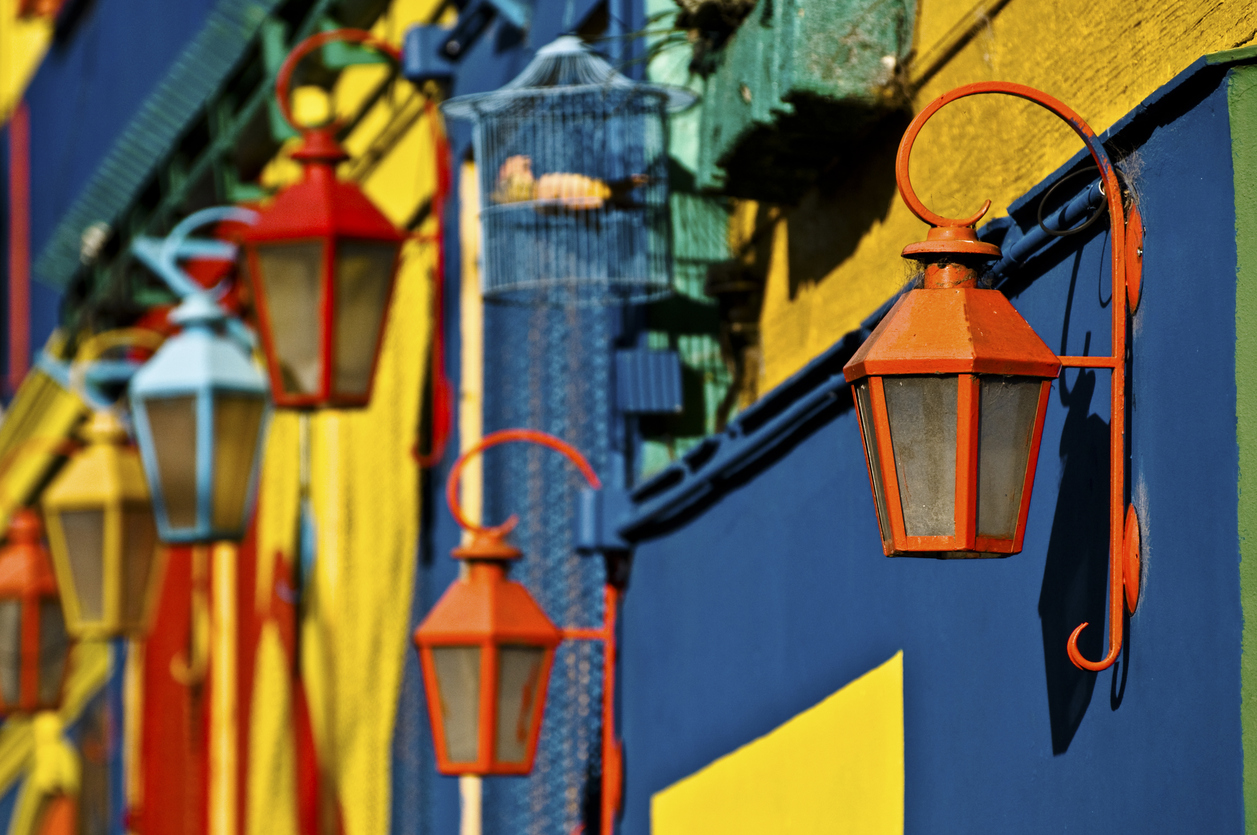
La Boca
Though touristy, the neighborhood is filled with welcoming sidewalk cafes, tango salons and lively street culture, making it a stop for just about everyone on travel to Argentina. While La Boca is a popular place to see a tango show, it is not a neighborhood to tour unaccompanied at night. Come here for a leisurely sidewalk lunch where you can take in all the action, photograph historic Buenos Aires, and enjoy the street-dancers.
The works of popular Argentine painter, Benito Quinquela Martin, are housed in the Museo de Bellas Artes de La Boca where he lived and painted his port scenes the neighborhood. After visiting this neighborhood on your Argentina tours, you can tell friends you came within a few blocks of La Bombonera Stadium, home of La Boca Juniors, the team of the illustrious Diego Maradona.
The neighborhood's most famous sight to see on Argentina tours is its colorful street named after a famous tango song, El Caminito. Just one block long, the brightly colored metal facades of the buildings are the backdrop for the neighborhood's street fair, predominated by inexpensively priced clothing, crafts and paintings, many with tango themes. The second-story balconies of some of the buildings hold three dimensional sculptures of human figures (including Eva and Juan Peron) as though ghosts of a bygone era. It is said that these buildings first became colorful when immigrants, too poor to buy their own paint, made do with the leftovers from their jobs on the docks in whatever hues were available. The pleasing mishmash of paint colors has proven a popular sight for those who travel to Argentina, and so the tradition continues.














